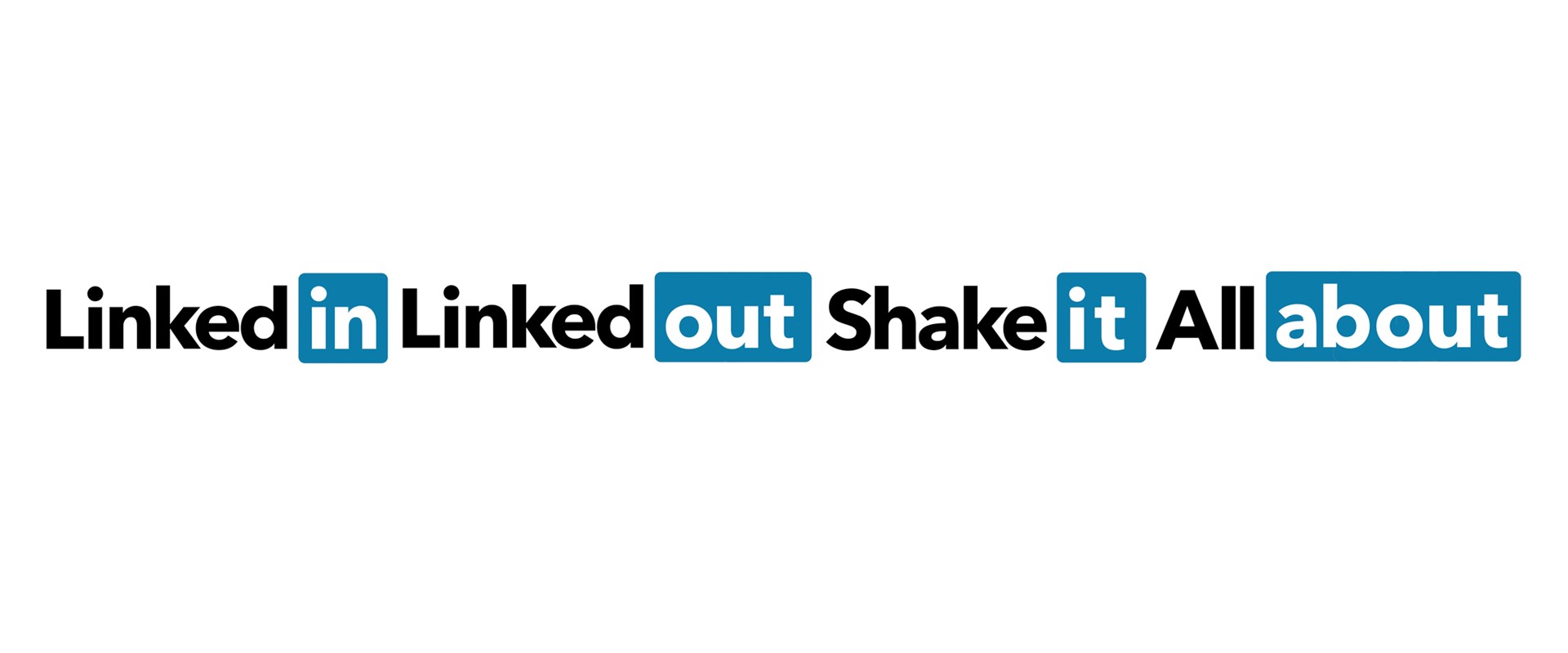I have a confession.
I don’t understand how the Linkedin algorithm works.
To be absolutely candid, I don’t really understand how any algorithm works from a mind-bending maths and coding point of view. But I can at least see some kind of logic in some of them, like Google, that seems to make sense.
Now I’ve been on Linkedin for so many years I can’t remember how long it’s been. I’ve got hundreds of connections, some of whom I actually know. I get dozens of connection requests every week, which I largely ignore. I ‘like’ and comment on posts quite regularly and I generally go on at least once a day, usually more, although I do have to admit I only post randomly.
But I’m none the wiser.
I mean about what pops up in your feed. Why it does and why some posts disappear quicker than your shopping trolley pound coin down the side of your car seat or why others seem to garner lots of likes and keep coming round for weeks on end.
In the past I’ve posted (at least what I thought) was really insightful and engaging content about some business related hot topic which tumbled down the feed never to be seen again. But I’ve also posted (at least what I thought) was fairly insignificant things that got hundreds of likes and comments.
So I’ve just done some research.
Admittedly it’s not the most sophisticated or in depth bit of research you’re ever likely to see, but I’ve just had a quick look at the top 30 or so posts in my feed right now. The results, along with my detailed qualitative analysis are as follows:
5 x ‘Promoted Content’ posts.
Basically paid for advertising which I guess is to be expected where the platform is free to access. But is it me, or are these increasing?
3 x 'Personal' posts.
Someone had a baby, someone else got engaged and someone else took their new puppy to work which I suppose at least has a tenuous business angle. Many congratulations all! But isn’t this what Facebook’s for I hear you cry? Now I realise I might be pouring petrol on this particularly thorny debate, but I have to admit I’m not entirely sure where I stand on it myself - of which, more later.
1 x 'Personal ‘humble’ brag' post.
This one surely is for Facebook because it’s always annoyingly smug. A picture of a cocktail on a hotel balcony with the view of the pool and beach behind coupled with ‘Recharging the batteries after a busy year. Looking forward to smashing it again in 2023.’ Point one: No. You’re just letting everyone know you’re on holiday. Point two: No one, even kids TV presenters, should ever use the expression ‘smashing it’.
5 x 'Selling' posts.
Just straight forwards ‘buy my stuff’ messages including book a place on a course, sponsor our expo and one for ‘5 tipping trailers - available now’. Which is great if you want a trailer. I suppose it is all business, but it just seems so, well, basic?
2 x 'Selling article' posts.
At least some thought has gone into these, a stock image has been sourced and some copy has been written. There’s a story, which then leads into ‘buy my stuff’ but at least it feels somehow a bit more polite?
1 x 'Political comment' post.
I have an old contact who must think that Nigel Farage is a raging lefty. He comments, usually with expletives, on anything he considers in anyway ‘woke’. He thinks working from home is for skivers and that Trump was a truly great president. I assume he thinks that The Daily Mail’s views are akin to The Morning Star and he often treads a very fine line on issues of colour. I really should disconnect. But it’s really quite addictive when you see he’s commented on something - ‘Oh, what’s he said now?’
2 x 'Charity' posts.
Barry is training for some massive walk to raise funds for a charity which he films himself talking about, slightly out of breath and sweaty on his iphone, daily. And someone else has presented one of those Comic Relief big cheques to a hospice. Surely this kind of thing is what Linkedin is for - raising awareness, building support and inspiring people to donate. Brilliant.
3 x 'Christmas and New Year' posts.
I suppose these at least have a nice sentiment, although I wouldn’t necessarily want Christmas cards from some of them judging by the type of clip art they’ve chosen to overlay their ‘best wishes from everyone at...’ messages on. Someone has been a bit more sophisticated and used one of those editable video libraries, so the message is animated, over fireworks. What is weird about them, is how some are 3 or 4 weeks old but they still coming round.
3 x 'Company news' posts.
One company’s had a re-brand, someone else has made an appointment and another has won an award. All good, and this is definitely appropriate content for Linkedin... but not that many ‘likes’ I notice.
2 x 'Recruitment' posts.
Of course using Linkedin for recruitment, both direct and by agencies, has driven its growth, but it’s got an excellent jobs section where you can post proper job ads for a very low cost. It’s very effective, because it’s targeted. Just posting a ‘we’re hiring’ post somehow seems both lazy and a little cheap?
1 x 'New job' post.
Someone got a new job, which is great. I wonder when Linkedin are going to update their clip art selection? That smiling balloons one seems to have been around forever.
1 x 'Disgusting content' post.
I know! Outrageous. But yes, I found a very upsetting promoted content post... from HMRC: 'Pay your tax deadline day is Jan 31st.' Happy New Year to you too.
Conclusions
Having carefully considered this exhaustive research I have concluded that:
I am still none the wiser.
However, from personal experience I can only advise that all posts really need some kind of an angle. Not that this necessarily guarantees success, but something that's a bit different, that tries to grab attention. A good image usually helps or a video really does, well written copy and ultimately a good ‘story’. Interestingly, even with quality business related content, it seems to be personal content that gains more traction. Ultimately I guess it's because people relate to people and we find a story about someone's successes, or even their trials and tribulations, more engaging than a story about a company winning a contract. Which brings us back to the Facebook question, so here are two of my own experiences.
Genuine business stories, which is what Linkedin should be for really, are of course fine. For example, I posted recently about bd2 being on the employer partnership board at Runshaw College which is a very positive attempt to improve relationships between academia and business leading to job creation. Excellent business story = 18 likes, 793 impressions. Absolutely fine.
By way of contrast, I also posted at a similar time - under the title ‘unapologetic proud Dad alert’ (which is basically confessing that this should be on Facebook) - about my daughter’s graduation from Edinburgh University with a Masters. Excellent personal story = 120 likes, 12 comments and 6827 impressions. Absolutely great.
To help answer that question of ‘what actually works on Linkedin?’ I found a really good article, from product marketer Hien Mai, who actually works at Linkedin. In terms of the Facebook question, and whether personal content should feature, she advises that it’s all about balance:
Professional growth and personal growth are very much intertwined, and conversations on LinkedIn should be about all of it. LinkedIn is a place to have authentic conversations, not limited to one topic or the other because so many of those things go hand in hand.
She goes on to explain the more complex question of ‘what shows up in my feed and why?’ Along with some good advice about affecting it:
Our feed uses algorithms to learn about your interests, and together with our human editorial team, help add engaging content to your feed. Our technology and teams also help filter out low-quality and unsafe content to ensure that what you see on your feed adds value to your professional journey.
To influence what you see on your feed, we recommend you follow people and companies you want to hear from, and engage with their content when it interests you. You can also subscribe to newsletters and Top Voices in your industry to help discover professionally relevant content. Some of the most widely read and distributed content are the posts that contribute ideas, insights, and inspiration, unlocking a world of knowledge, opportunities and collaboration.
Tell us what you want to see less of by clicking the three dots (...) on a post. This lets you unfollow, remove a connection, report the post or you can click “I don’t want to see this.”
There is also an acknowledgement, of sorts, that the algorithm isn’t perfect:
We’re continuing to work on ways to improve the content you experience on LinkedIn, surfacing authentic, relevant, and substantive conversations to help you grow as a professional.
Then in terms of ‘how often and when’s the best time to post?’ she advises:
Daily posting is optimal to maintain consistent engagement with your audience, but be sure not to overdo it and avoid overwhelming your audience. While some in your network will want to hear from you often, others may feel overwhelmed when people post more than once per day. It is important to understand how your audience engages with your content and how often to inform your posting frequency. If your comments and engagement on a post remains consistent, that’s a good sign that your content is engaging. Consider when your audience is tuning in. It may make sense to focus on evening posts for those returning to the platform after work or keeping to weekdays versus weekends.
Finally, the answer to that killer key question of ‘what type of content works best on LinkedIn?’ is:
It’s best to diversify the types of content you post to see what drives the most engagement with your audience. Experiment with different types of content and figure out what your audience engages with the most.
So there’s no silver bullet.

